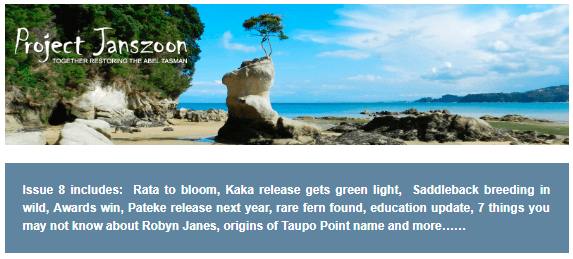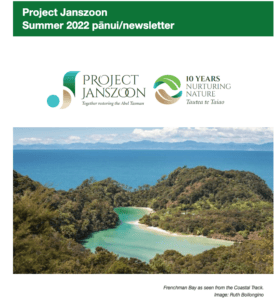
Rata returning to the Park
The rich red of the northern rata will be more conspicuous around the Park’s coastline in years to come as a re-planting regime begins this year.
Trustee and botanist Dr Philip Simpson and Operations Manager Andrew Macalister have recently been mapping current rata distribution. They are also looking at historic distribution, with a view to planning rata planting for the next few years.
First up will be around six sites at the mouth of the Awaroa River where about 50 rata trees will be planted this year. Around 50-100 potential sites have been identified in the Park, many of them slip sites, and each will be visited to establish how many trees can be planted there.
“In some sites rata can be planted quite densely with 200 to 300 trees but in other sites planting will be more sparse. Ultimately we will establish groups of plants where evidence shows they used to be and they will serve as centres for seed dispersal,” says Philip.
Rata takes around ten years to bloom. Philip visited some trees that were planted by Project Crimson over the last 15 years and says they show a high level of survival.
“We do need a rigid programme of maintenance and weed control to ensure their success. But it has been a wonderful trial and the answer to whether rata can be replanted successfully in the Park is definitely yes,” he says.

